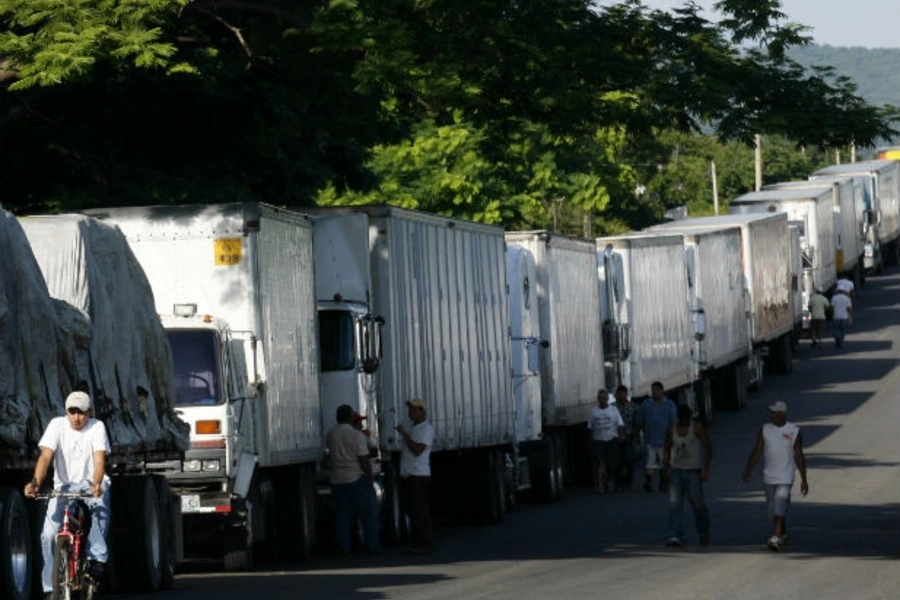Latin America: Trading and Investing Together

More on:
Economic ties lead Latin America’s integration efforts. Promising some of the greatest concrete benefits—larger markets, improved livelihoods, and enhanced global economic power—leaders and communities alike have tried to integrate the region through three main means: trade, infrastructure, and investment.
In the post-WWII era, governments began creating ambitious trade organizations, such as the 1960 Latin America Free Trade Association, or LAFTA, and its successor, the Latin American Integration Association, or ALADI. Both focused on (and never achieved) an integrated common market. Less ambitious (but more successful) have been the over fifty trade agreements negotiated over the past fifty years between Latin American neighbors, setting the stage for greater economic interchange.
A look at the two most prominent economic-based agreements—the Southern Common Market, or Mercosur, and the North American Free Trade Agreement, or NAFTA—highlights the different paths. Created in 1991, Mercosur brought together Brazil, Argentina, Uruguay, and Paraguay, and later granted associate membership (allowing market access with no voting rights) to Chile, Bolivia, Colombia, Ecuador, and Peru (and most recently granted full membership to Venezuela). Its goal was more than just trade, envisioning coordinated macroeconomic policies as well as a functioning regional parliament. Despite the ambitious vision, intra-bloc trade peaked in the mid 1990s. Stymied by the protectionist tendencies of its two largest economies, Brazil and Argentina, regional integration through Mercosur has floundered.
This dynamic contrasts with the evolution of U.S., Canadian, and Mexican integration in the wake of the 1994 North American Free Trade Agreement. Though without the breadth of Mercosur (to coordinate government policies and create new political institutions), NAFTA, nearly twenty years on, has spurred deep integration in North America. Trade between the three participants has increased three fold to over a trillion dollars. Even more telling is the integration of regional supply chains. As Robert Pastor, director of the Center for North American Studies explained, “We’re no longer trading products in North America; we’re making products together.” Today 40 percent of U.S. imports from Mexico are produced within the United States—this means that even if it says "Made in Mexico" nearly half of the work was done in the United States.
Facilitating the back-and-forth in North America have been networks of roads and train tracks (though with the rise in trade and with age, these are now overwhelmed). The rest of the region is much less physically linked. In South America, roads have traditionally connected communities and production sites to ports rather than neighbors, hampering intra-regional trade. Recent efforts to change this, such as a continental highway connecting Brazil through Bolivia to Peru, have foundered on environmental concerns and protests.
Transnational infrastructure has also increasingly extended beyond building roads. There has been a great deal of interest (and some progress) in integrating energy matrixes. The most advanced project is the Central American Electric Interconnection System (SIEPAC), which, when completed, will run an 1800km transmission line from Guatemala to Panama, connecting the region’s electricity systems. Also on the drawing board is the South Gas Pipeline Network, which would link energy production centers in Peru and Bolivia to consumer bases in Chile, Argentina, Brazil, and Uruguay. The United States supports many of these initiatives through the Connecting the Americas 2022 program, which aims to increase electrical interconnections through transnational energy grids.
Further along than these state-led efforts is the private sector and foreign direct investment. In 2010 outlays from within the region in their neighbor’s markets hit $43 billion—almost triple China’s $15 billion contribution. And in contrast to other types of investments, money flowing over neighbors borders was more apt to go into financial services, retail, and utilities—value-added activities with more positive trickle down effects for the broader economy. The rapid multilatina growth has also benefited customers. For instance, Chile’s retailer giant, Cencosud, has pushed its stores throughout the region, and now sells products to (and employs) Argentineans, Brazilians, Colombians, and Peruvians.
Despite these advancements, regional integration falls short when compared to the rest of the world. The Economist shows that Latin America’s intra-regional trade clocks in at just over 20 percent of all exports, much lower than the EU’s intra-regional exports (70 percent in 2010), or Asia’s and North America’s (50 percent each). This is partly because Latin American countries still continue to trade more with the United States than with each other. But increasingly Latin American nations have also looked inter-regionally for their economic agreements, with Chile and Peru (and soon Mexico), joining the U.S., New Zealand, Singapore, Brunei, Vietnam, Malaysia, Canada, and Australia in negotiations for the Trans Pacific Partnership—which would deepen trade across the pacific countries. If it succeeds, it may signal another turn in Latin America’s economic agreements—Latin American countries integrating with one another while looking abroad together.
More on:
 Online Store
Online Store